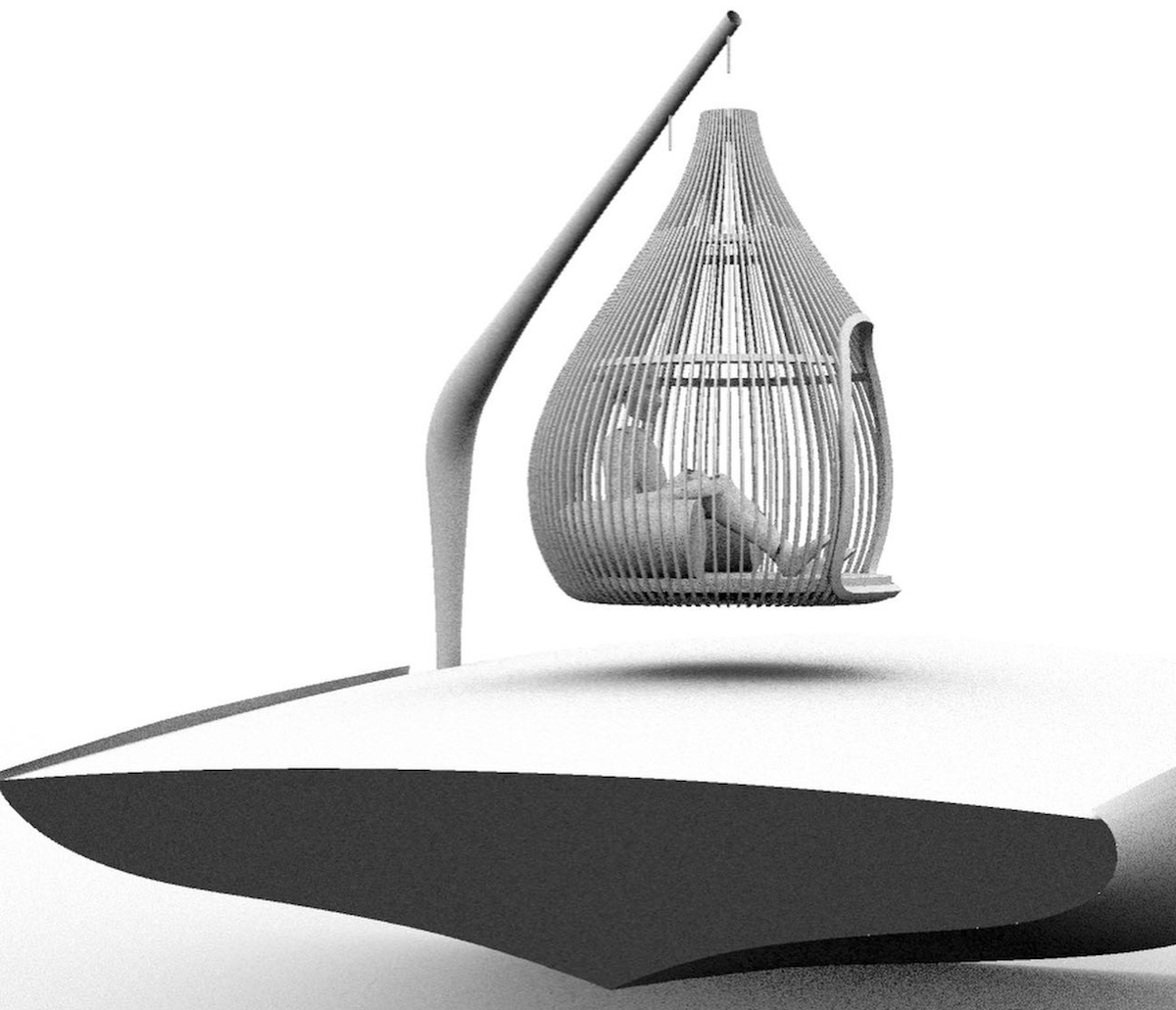
Cutr – A marketplace connecting designers, architects & product makers with woodworkers
With the Summer holidays in sight, I’m looking forward to spending a few weeks in the Mediterranean with lots of sunshine and boat trips to beautiful beaches. It’s the perfect area to sit, relax and enjoy the stunning views. This is why it’s so fitting that the Palma-based designer, Robert Coleby, designed the beautiful Teardrop chair.
He teamed up with Cutr, a marketplace that connects designers and creators with woodworkers, to bring the chair from concept to reality. Given its complex design, Coleby ran into problems, but partnering with Cutr helped him overcome these challenges quickly and efficiently.
Below I’ll share more about the concept of the Teardrop chair and a peek into Cutr. If you’re a designer, architect or product maker wanting to make anything from furniture, cabinets, tiny houses and more, you’ll want to check them out! I, myself would like to work with Cutr in the future.
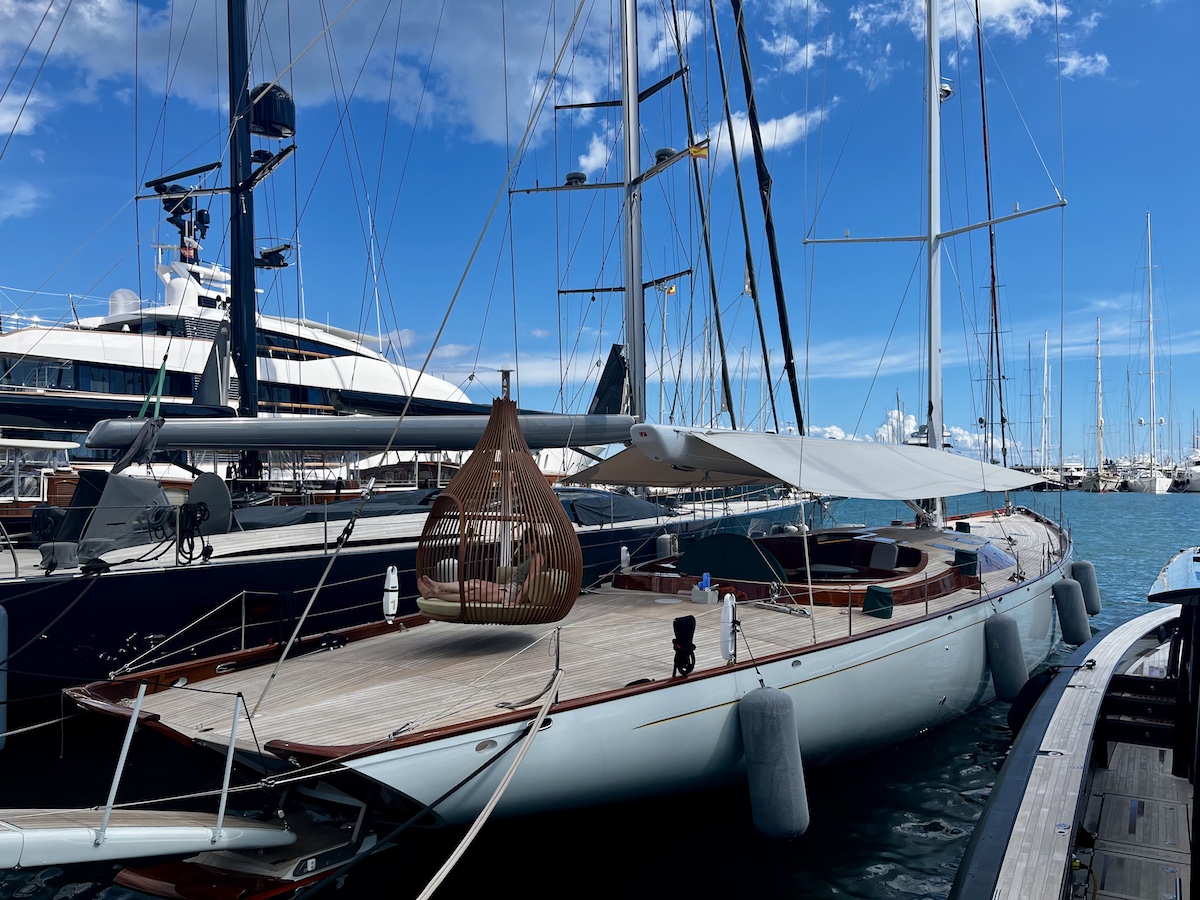
Cutr – From design to production
As a woodwork manufacturing service, Cutr helps get your products designed, built and delivered. Providing design support, prototyping, and serial productions next to very flexible payment terms . They help you find the best price, lead time and quality and match you with one of their network partners based on your production needs.
Because design and production go hand in hand, Cutr is also the perfect partner for the production partners who can make what a designer creates. As a marketplace for woodwork, Cutr helps customers find the perfect manufacturer. “Our software and team do a lot of work upfront to ensure our partners get well-scoped, error-checked projects ready to go. We always pay upfront and provide the terms they want.” Cutr says.
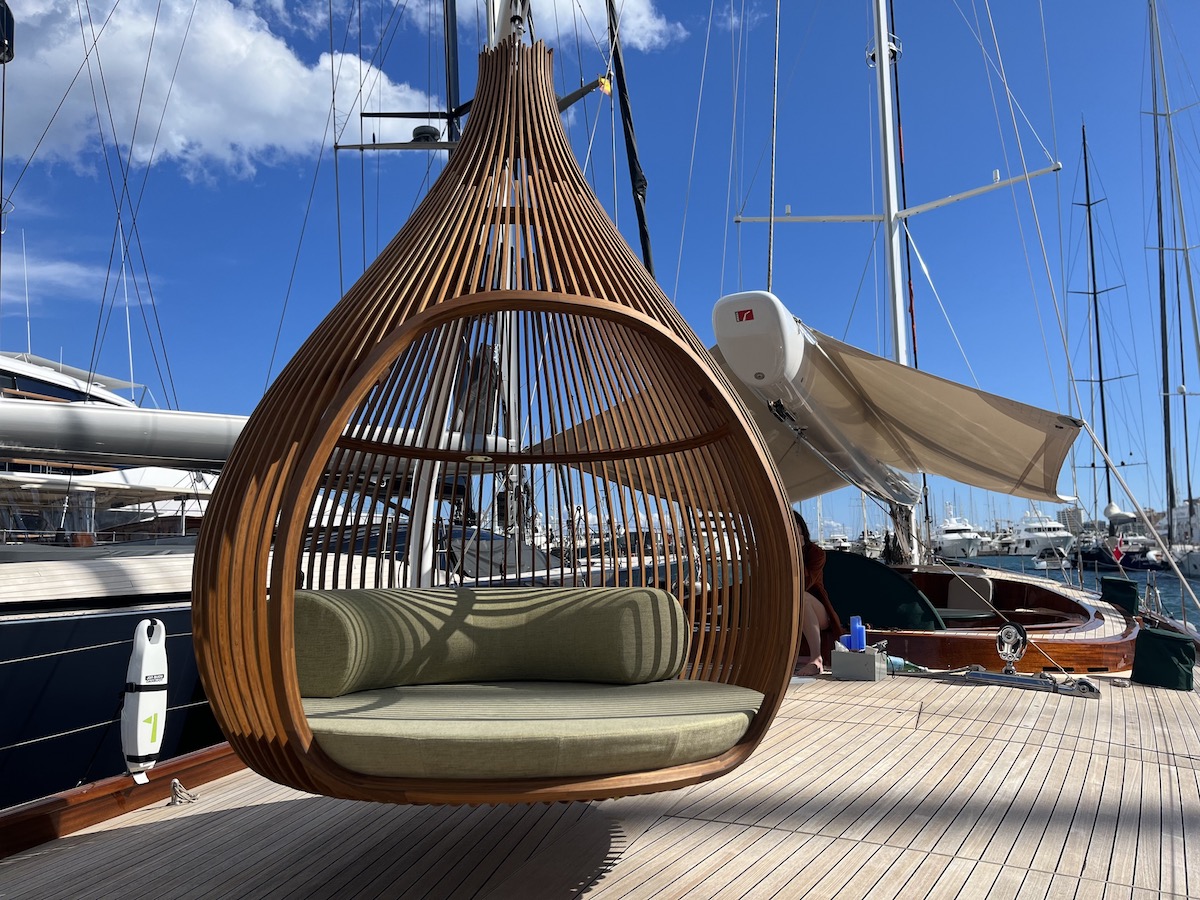
The Teardrop chair
The Teardrop chair was brought to life by Robert Coleby, a craftsman living in Palma, with a passion for cabinet and furniture making and a wealth of experience in boat building at Spirit Yachts.
The concept for the chair was born from the yacht’s interior, which embraces smooth, organic shapes and avoids any square or upright elements below deck. Keeping this distinctive aesthetic in mind, the client shared a concept sketch. While the design looked fantastic, Robert realized some major adjustments were necessary to ensure the chair’s functionality on a moving yacht.
It needed to rotate and move freely in all directions to withstand the pressures from any waves and motion. And to achieve the chair’s proportions, the existing davit didn’t provide enough height from the deck, and a longer carbon davit was needed. The chair had to be designed to break into sections for easy storage in the yacht’s lazarette during sailing.
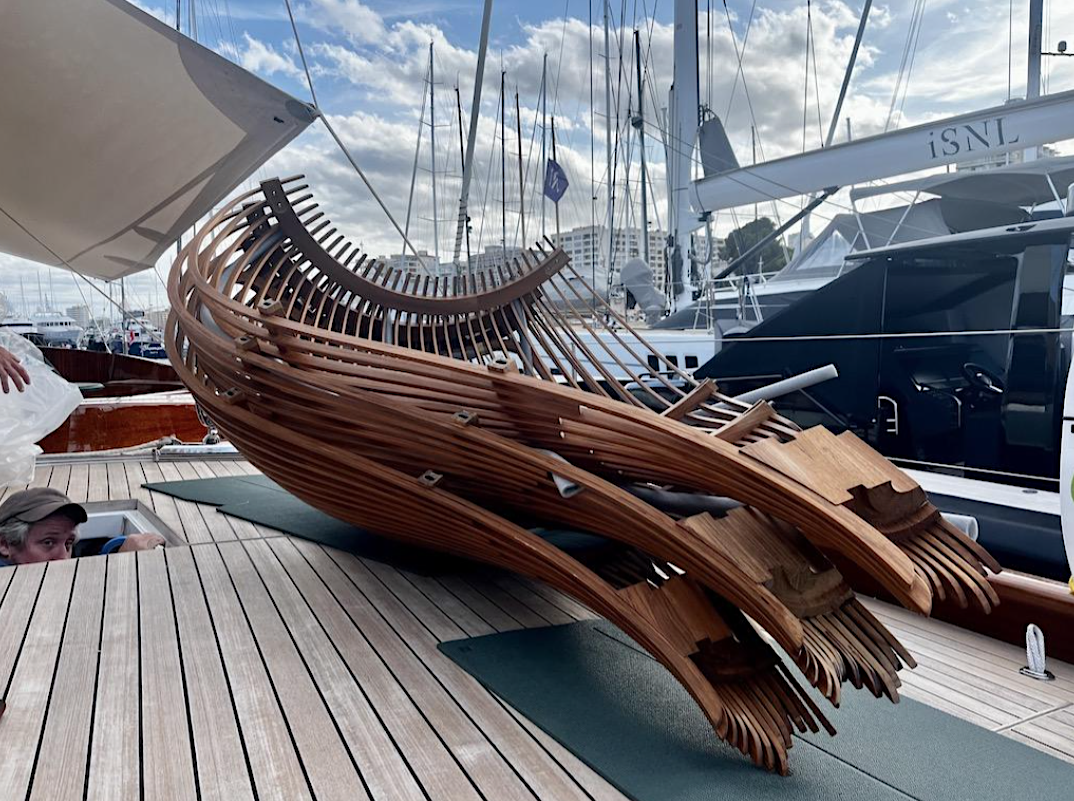
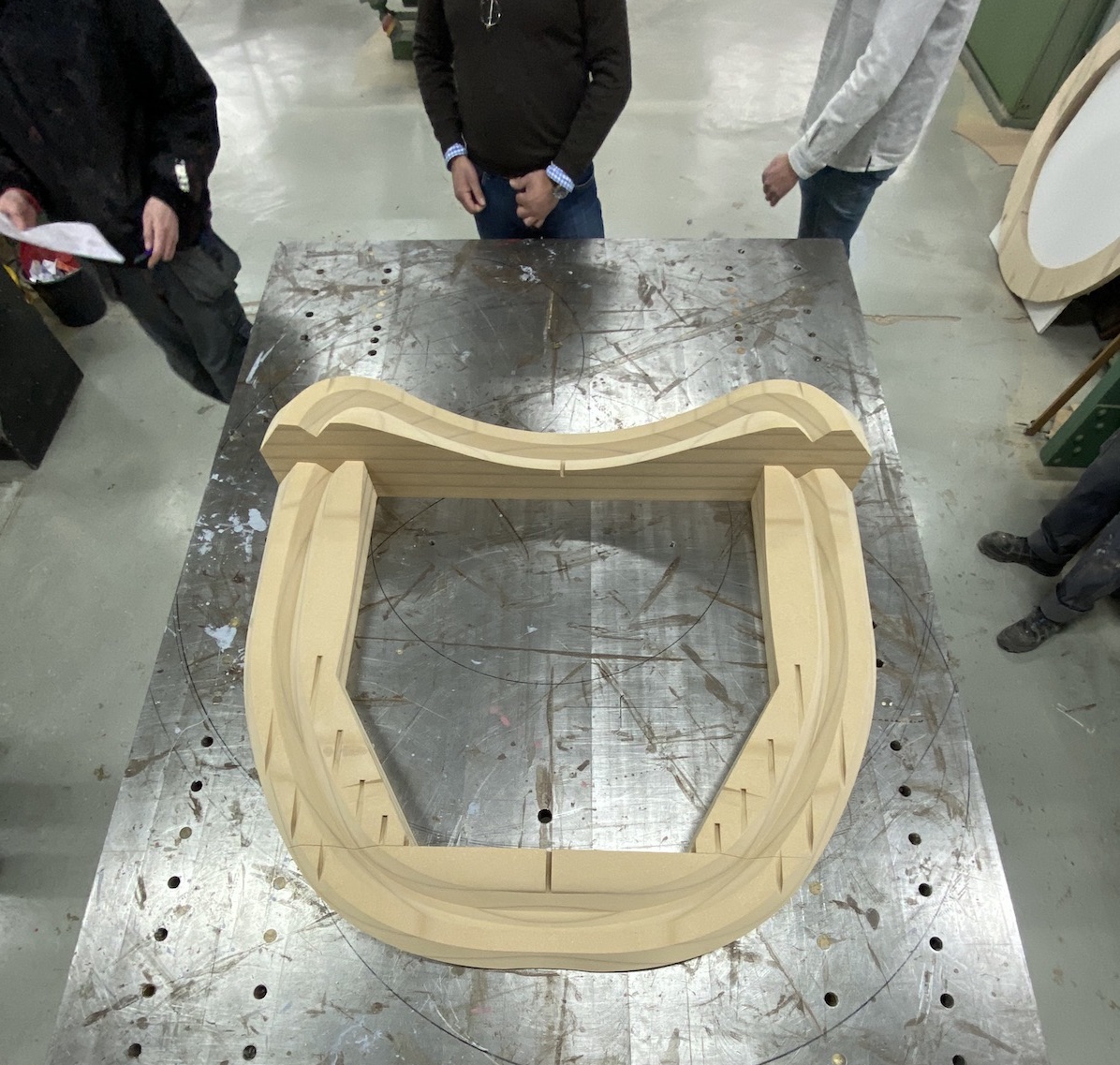
Working closely with Cutr throughout the project
Together with naval architect Neal Pawson, an expert in CAD, they refined the dimensions and curves of the chair’s opening hoop, striking a balance between practicality and aesthetics. The manufacturing phase encountered some hurdles along the way. The complex mould required for the opening hoop necessitated a specialized 5-axis CNC machine, which was challenging to find locally.
Robert received a recommendation to connect with Cutr. Their internal design team worked with Robert on the challenging brief and found a suitable production partner after shortlisting a few potential partners. They helped to avoid a potentially costly setback as the specialist machine operator at the first production partner quit. Cutr quickly understood his needs and found the production partner Kleizen, a development partner in complex forms, ensuring the project’s continuity.
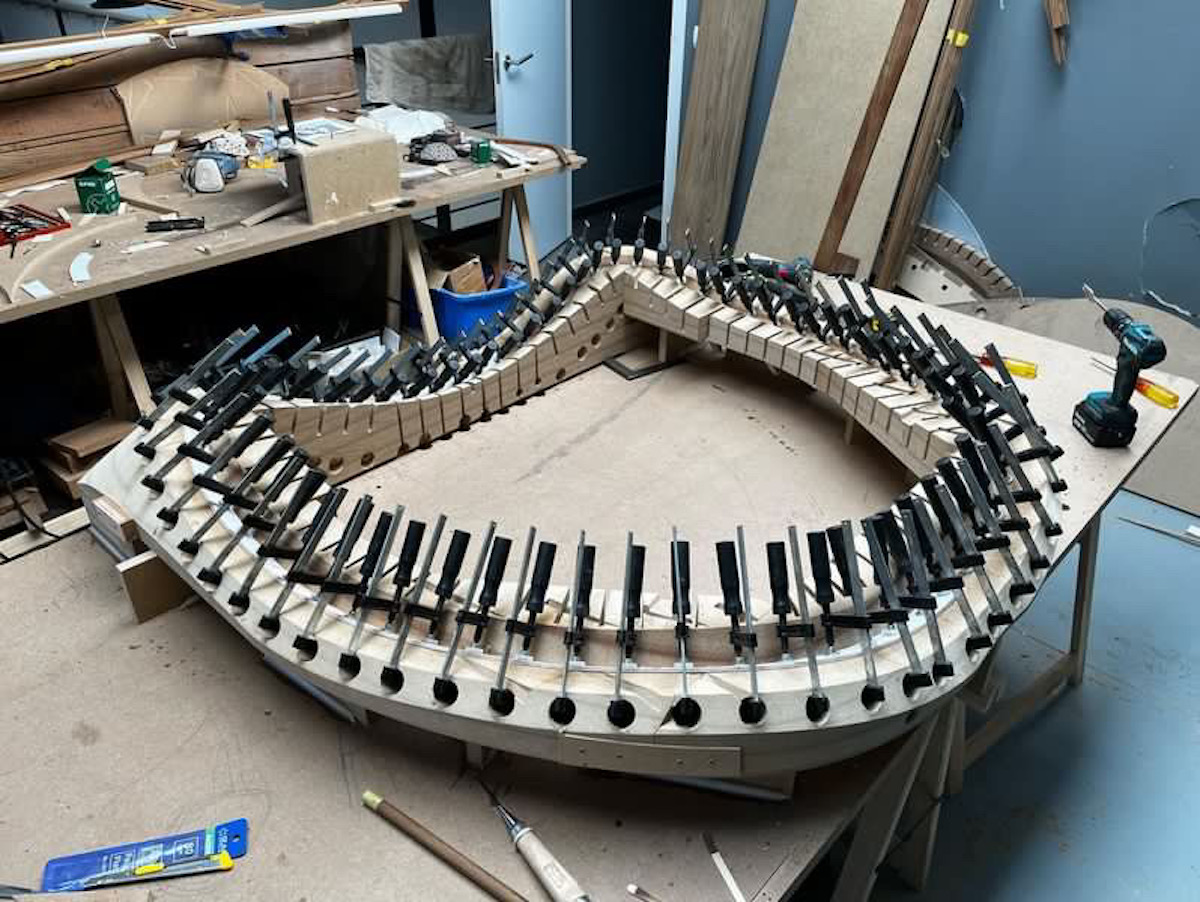
Finishing the chair and looking back at the process
Finishing the chair and looking back at the process
The final mould arrived and assembled perfectly and was ready to go. The next challenge was constructing the chair’s complex opening (door). Each hoop is made from seven layers of teak, and only able to glue one layer at a time to ensure that all the joints are tight and the timber adopts the correct shape on the mould. This was a time-consuming process. The 96 battens that formed the chair’s vertical pieces were meticulously crafted by laminating teak strips together and skilfully clamping them onto moulds.
Looking back at the making of the Teardrop chair, Robert says that it has been a labour of love for 12 months and is his proudest design achievement. He is delighted about the result and his partnership with Cutr to overcome the challenges.
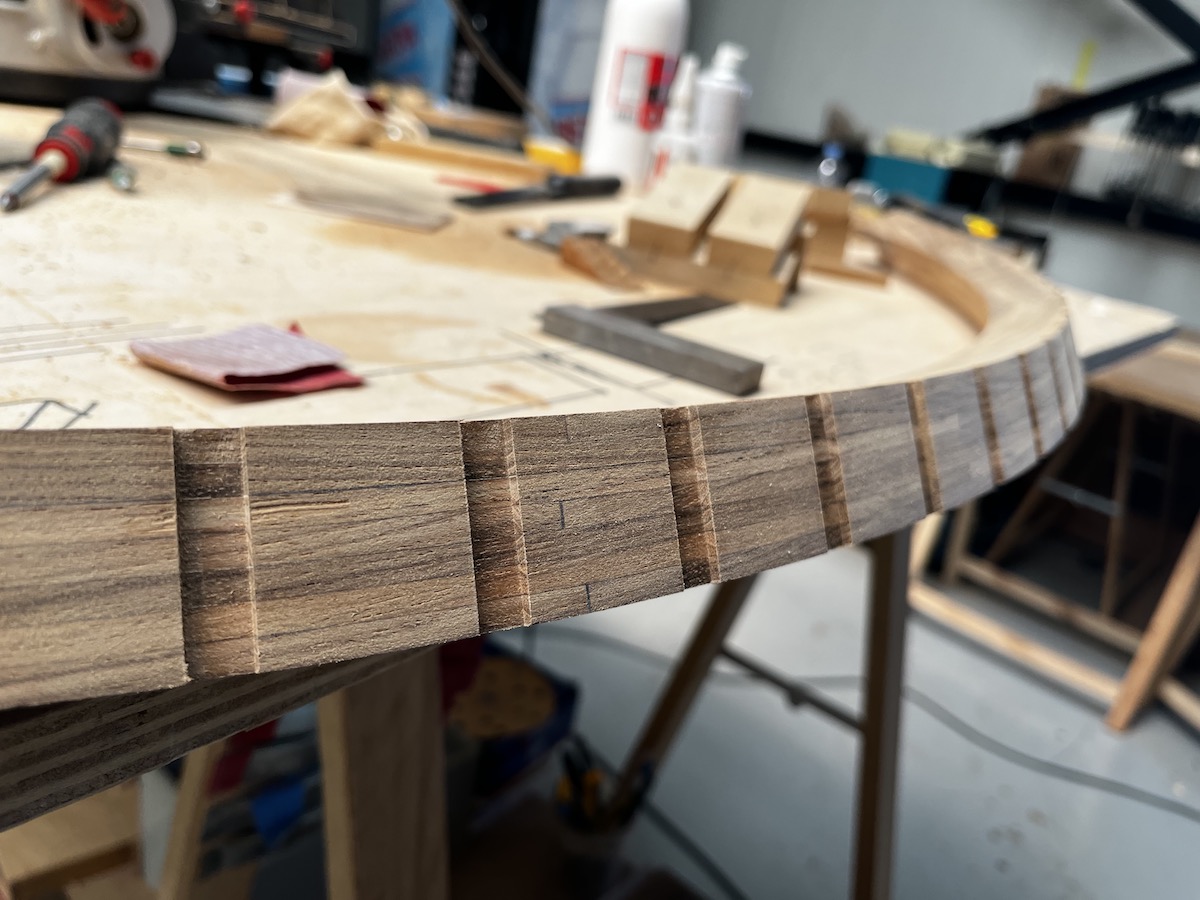
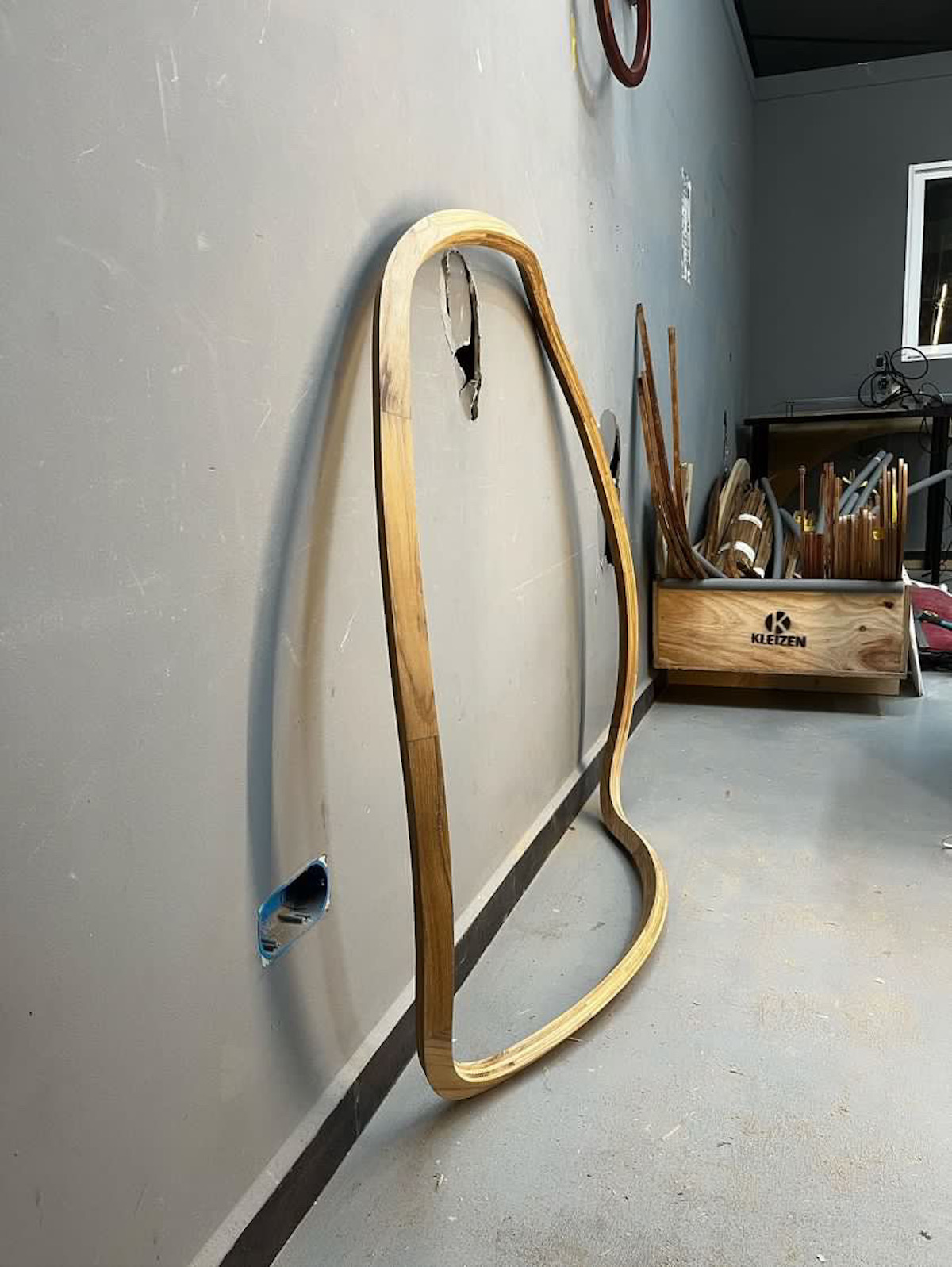
The final door/opening for the Teardrop chair
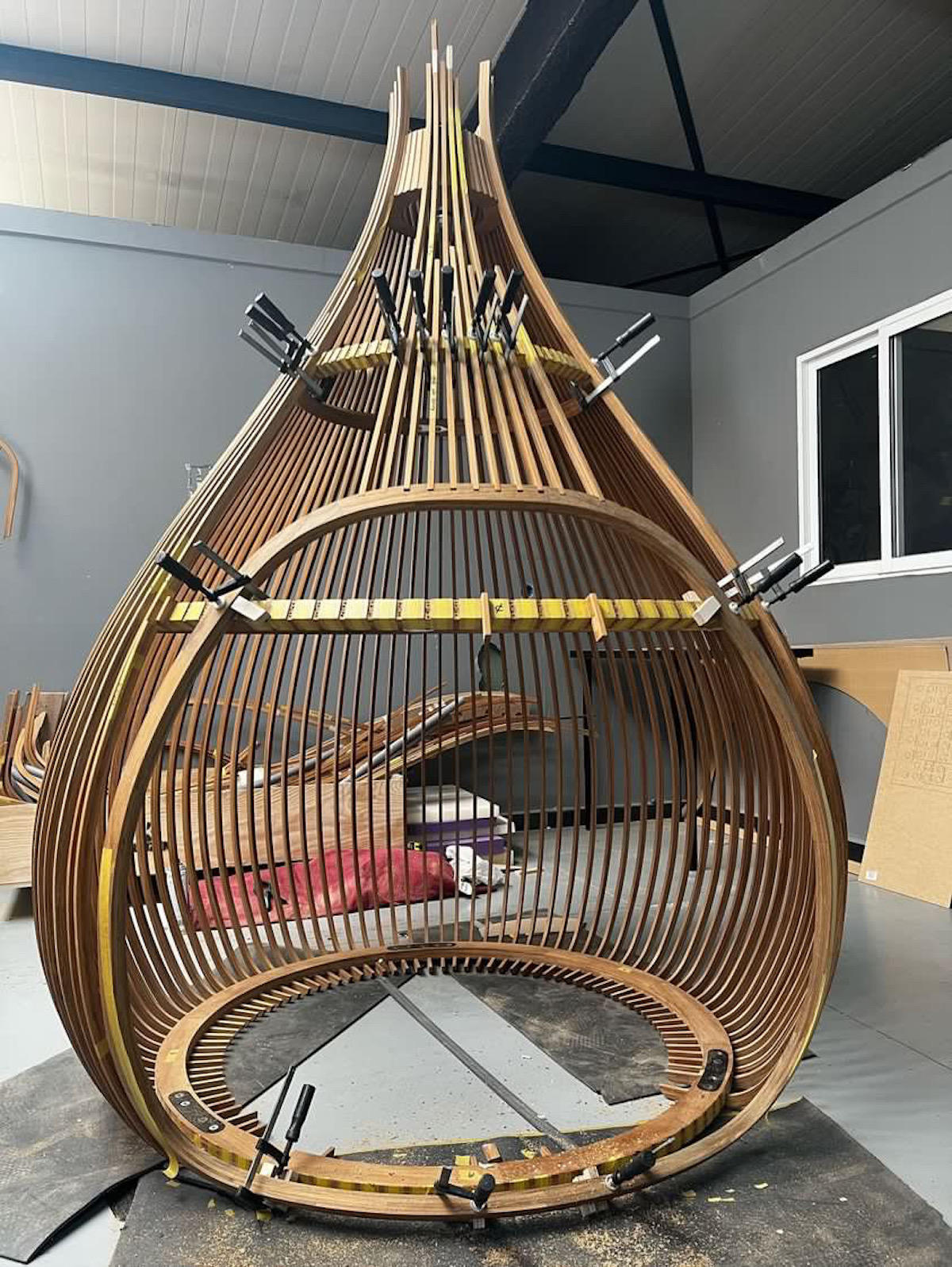
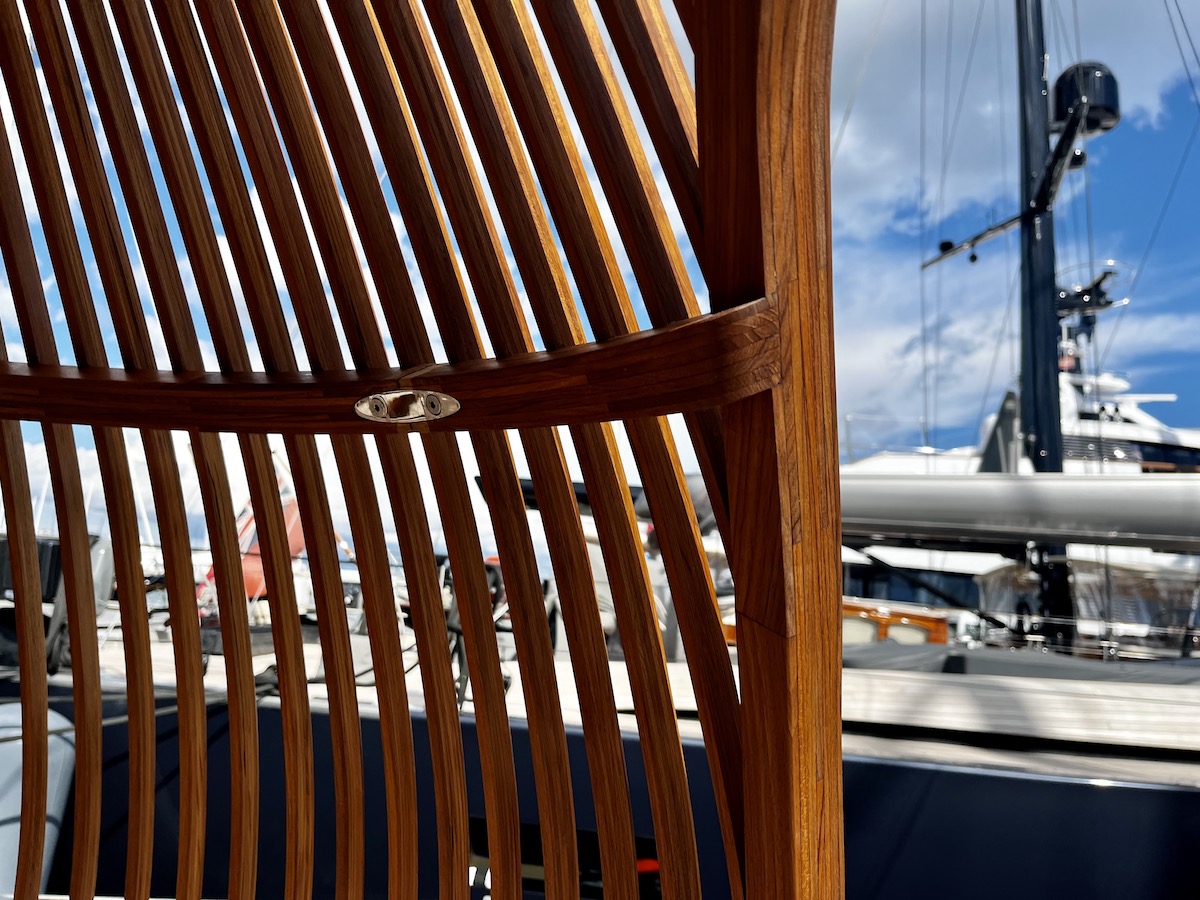
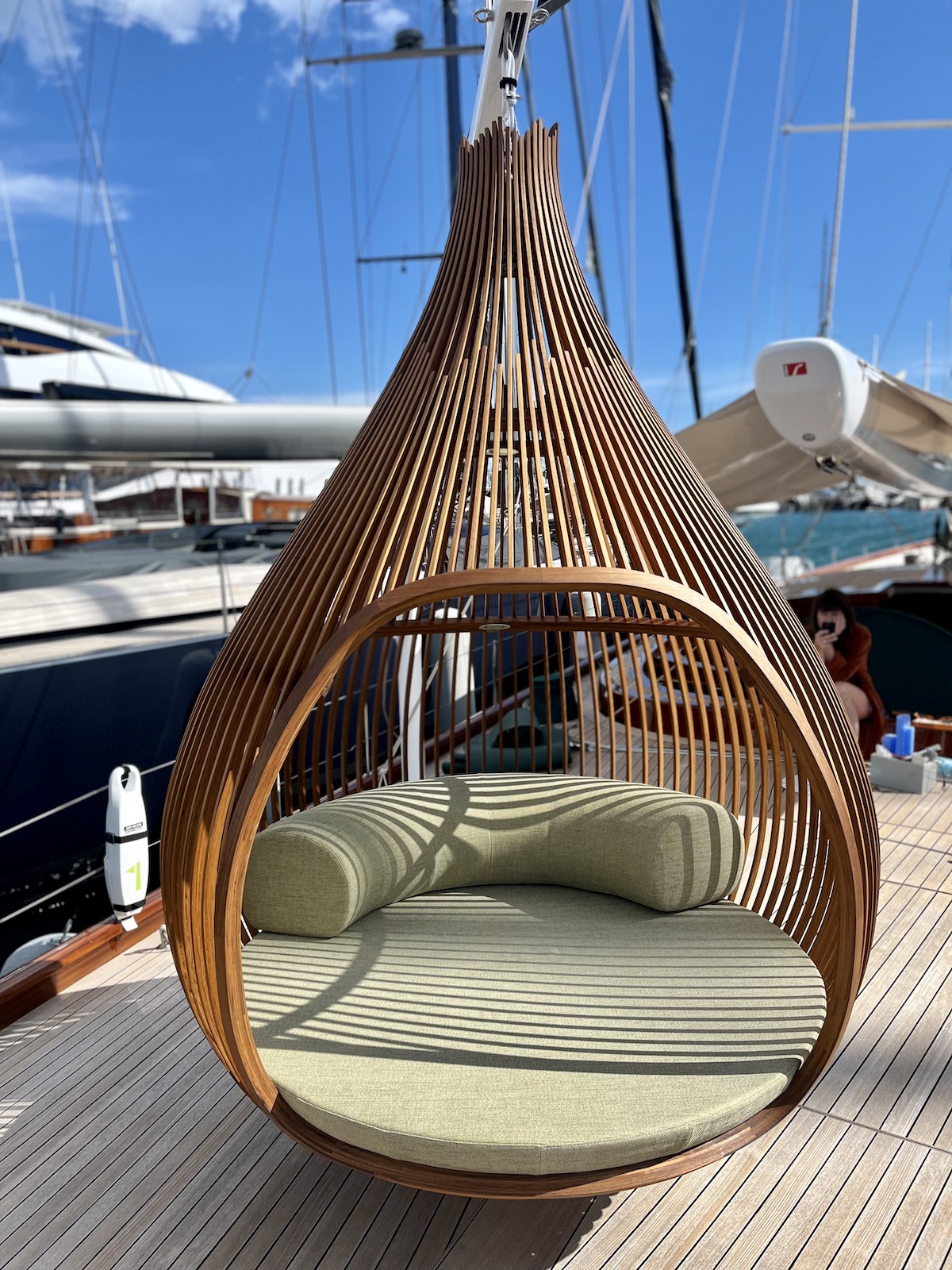
Written in collaboration with Cutr
